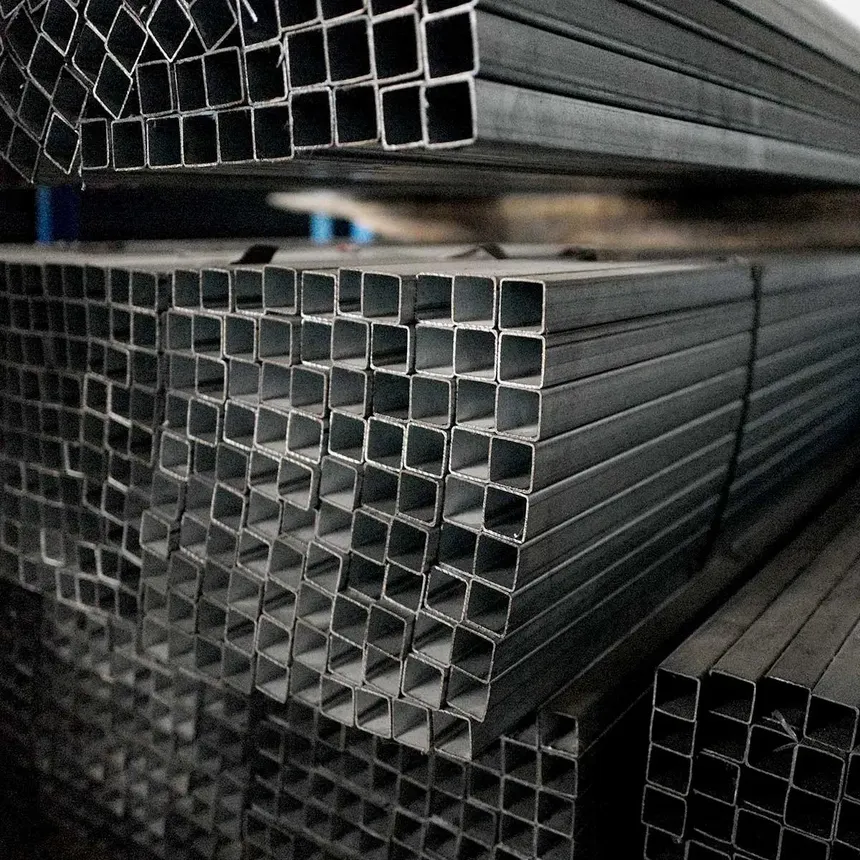
1. What Is Hollow Iron?
Hollow iron, also known as Hollow Structural Section (HSS), is a type of metal profile with a hollow cross-section typically square, rectangular, or circular.
It’s made from mild steel or galvanized steel and is widely used in both structural and decorative applications due to its strength, lightweight design, and aesthetic appeal.
Hollow iron is popular in construction projects such as canopies, fences, railings, gates, and building frameworks. Its versatility and clean design make it a favorite among engineers, architects, and builders alike.
2. Types of Hollow Iron
There are several types of hollow iron, each serving different functions depending on the design and load requirements.
- Square Hollow Section (SHS)
- Has equal width and height.
- Commonly used in frames, fences, and architectural designs.
- Offers excellent torsional resistance.
- Rectangular Hollow Section (RHS)
- Features a longer width compared to its height.
- Ideal for beams, columns, and structures requiring directional strength.
- Circular Hollow Section (CHS)
- Round shape with smooth appearance.
- Often used in handrails, scaffolding, and structural supports.
- Galvanized Hollow Iron
- Coated with a layer of zinc to prevent rust.
- Perfect for outdoor or humid environments.
3. Advantages of Using Hollow Iron
Hollow iron provides several benefits over traditional solid steel or wood materials:
- ✅ Lightweight but Strong: Its hollow design reduces weight while maintaining structural integrity.
- ✅ Cost-Effective: Requires less material than solid steel, reducing production and transportation costs.
- ✅ Corrosion Resistant: Especially when galvanized or powder-coated.
- ✅ Aesthetic Appeal: Clean lines and uniform shapes fit modern architectural styles.
- ✅ Easy Fabrication: Simple to cut, weld, and install for various design needs.
- ✅ Versatile Applications: From industrial frameworks to decorative projects.
4. Common Applications of Hollow Iron
Hollow iron can be found in numerous industries and structural projects:
- Building frames and trusses
- Canopy and roofing structures
- Fences, railings, and gates
- Furniture frames and shelving
- Automotive and machinery components
- Architectural and decorative metalwork
5. Tips for Choosing Quality Hollow Iron
When purchasing hollow iron, consider the following factors to ensure durability and performance:
- Check Thickness (T): Thicker walls offer higher strength and resistance.
- Choose the Right Coating: For outdoor projects, opt for galvanized or painted hollow iron.
- Inspect for Surface Defects: Avoid products with dents, rust, or cracks.
- Confirm Standards: Ensure the material meets recognized standards like ASTM, JIS, or SNI.
- Buy from Trusted Suppliers: Reliable distributors provide quality assurance and consistent sizing.
6. Conclusion
Hollow iron is one of the most versatile and reliable construction materials available today.
Its combination of strength, lightness, and aesthetic flexibility makes it ideal for both structural and decorative purposes.
Whether you’re building a modern home, a commercial space, or an industrial framework, hollow iron delivers the durability and style your project needs.
ALSO SEE ; Herbal Tea: Benefits, Types, and Brewing Tips for Wellness





